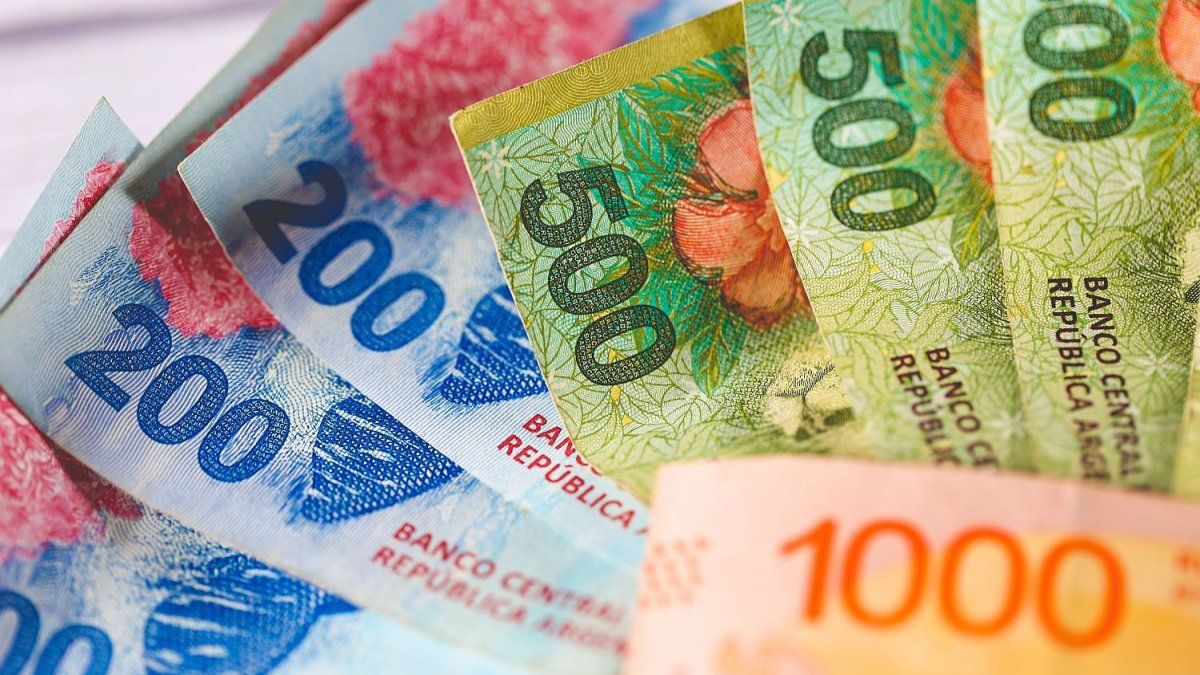Pablo Repetto, Head of Research Aurum Values, consulted by Ambit He expressed that what is expected is that there will be “quick definitions” because the situation is “extremely fragile.”
“Surely let’s see an exchange rate adjustment and possibly some kind of additional tax devaluation. One would hope that they send a clear signal of releasing restrictions in the bond, rates and dollar markets at least in minor aspects so that it is clear where it is going. Fewer regulatory restrictions and fewer obstacles to operations. Some greater freedom for importers who need to pay debt (for example, so that they are not disqualified from accessing the MULC if they use MEP or CCL to cover themselves),” Repetto anticipated.
Official dollar at $600?
In principle, the exchange rate adjustment is already taken for granted and the dollarization scenario was ruled out immediately.
According to the latest report of FyMA of Fernando Marull y Asociados, the market bought that there will be a devaluation in December but not unification. It also discounts that the devaluation of the official will reduce the exchange gap from 160% to 30% in a few weeks. A similar opinion holds Econviews, which in fact projected the exchange rate for December at $630.92 and for Cash with Settlement or “CCL” below $900. In this way, heThe gap would be around 40% and it would close due to the rise of the “floor” and not the ceiling, causing the parallel dollars to move away from the $1,000 area.
The value that financial analysts expect for the official dollar seems to be closer to $650. The number was actually dialed Guillermo Francos, less than a week ago, when he stated that the value of the currency could be located at that price. This is how the market adjusted expectations and already predicts that the “Caputo” plan The exit from the exchange rate will be more “gradual” than expected months ago.
However, there is no absolute consensus. The latest report of Focus Economics which brings together national and international banks and consulting firms, indicated that the expectation of devaluation for banks is even greater and the official one could even be above $1,500 at the end of December. Whether or not there is an overestimation of these values remains to be seen.
Inflation: a tough quarter of 2024
With great caution, some consulting firms revealed the inflation projections for the first two months of Javier Milei’s management and a strong acceleration of around 40% is projected for December and January. What factors will determine this strong rise? The price correction of the economy and devaluation.
After the 8.3% recorded by the Consumer Price Index (CPI) in October, the private sector believes that inflation will return to double digits from December onwardswhich means that the cost of living for the months to come will be higher.
For private companies, last month’s CPI, which will be known on December 13 this month, it will be between 11% and 13%. Thus, C&T Economic Advisors reported inflation of 11.5% in November. Meanwhile, the Libertad y Progreso Foundation (L&P) recorded an inflation of 12.6%, while Ecolatina reported 12.7%. For the Orlando Ferreres Study Center, for its part, it marked 12.9%, EcoGo is betting that it will be 13.4% and Equilibra projected 11.2%.
In this way, analysts predict that the year will end with inflation that will range between 182% and 211%. However, there is a possibility that this figure could increase up to 240% in the event of a significant devaluation, as is expected to happen. That, as was said, would have an almost immediate transfer to prices.
The Economist Pablo Ferrari, In dialogue with this medium, he explained that the rise in the official dollar that is expected will generate a transfer at “very powerful” prices where the replacement price “becomes a fundamental factor as a propagating mechanism for inflation.” Thus he stated that a 20% inflation for December is going to be a “floor.”
consumption-supermarkets-inflation-prices-gondola-foods.jpg
The market expects inflation of at least 20% in December.
Depositphotos
The delay in the main relative prices of the economy during the Government of Alberto Fernández is one of the objectives that Javier Milei’s economic team has in mind. There you will find gasoline, electricity and gas rates, prepaid, transportation, among others. Private calculations warn that correct those imbalances implies in the first instance double inflation in the short term.
A recent work by Balance He detailed that to equate regulated prices with the general level, gasoline should increase 45.5%, energy rates 146.8%, public transportation 83.3% and prepaid rates 39.2%. With that cocktail, inflation would rise almost 7 points, according to the consulting firm’s estimate. This “contained” inflation added to the “precautionary” price increase due to the devaluation, They will generate an explosive cocktail for this month and for the coming ones.
Fixed terms: what will happen to the rates?
He Central Bank of the Argentine Republic (BCRA), now commanded by Santiago Bausili, A decision could be made soon regarding the interest rates of fixed terms.
At the moment, interest rates remain at a nominal 133% annual rate and the monthly rate is around 11.9%. However, the market expects that there may be an increase in the short term. According to FyMA, if the “Caputo Plan” redeems the liabilities of the Central Bank The interest rate would be raised to 15% monthly.
“After the movement of the official dollar, the market would move to make a rate from next week,” the consultant predicted. This would leave the fixed terms with a negative performance compared to inflation and would make it lose compared to another similar instrument such as the fixed term CER.
However, for the economist Ferrari, the rates policy It is still within the framework of uncertainty: “It will be explained shortly but there will probably be a rate curve where the rate for longer terms is the highest. Maybe this is what less is clear until today.
The Economist Fabio Rodríguez, Managing partner at M&R Asociados, finally contributed that in the case of rates, she will be very “pressured.” “They are going to try to do not lag far behind inflation even though they don’t want to upload it. It seems to me that with this inflationary reality that is coming, they are going to have to, in the first instance, accompany that or resign themselves to nothing more than a loss of deposits that will put pressure on the gap and financial dollars,” he concluded.
Source: Ambito




